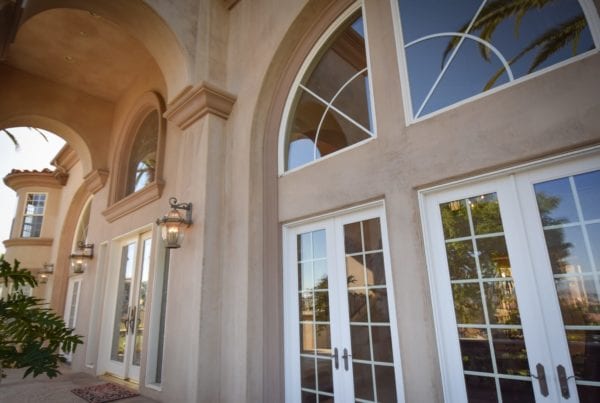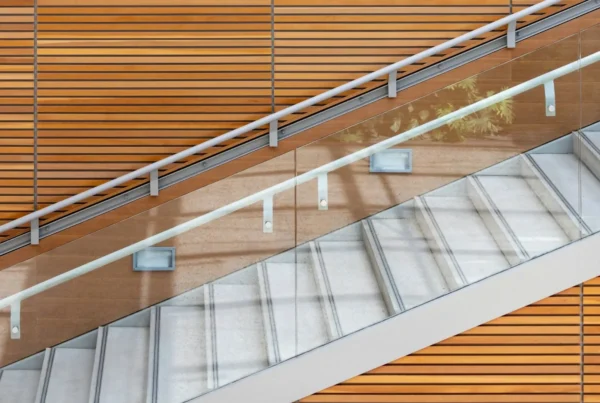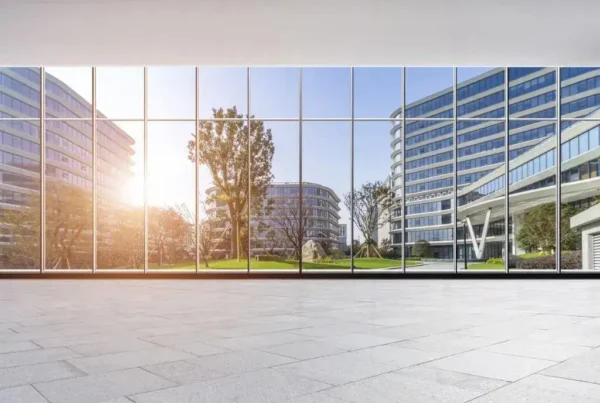What do burglary, smash-and-grab theft, and riot-induced looting all have in common? They’re all types of forced entry that retailers and other commercial building owners have to worry about on a day-to-day basis.
In order to effectively protect your business or facility against forced entry, you need a layered window security strategy.
This article will explain what the different layers of a comprehensive forced entry security system are and how you can implement them in your business or commercial facility.
When It Comes To Forced Entry, Window Security Has 3 Layers
- Deterrents
- Security glazing
- Security window framing
Deterrents
A deterrent is anything that makes a would-be intruder think twice about targeting your property and trying to gain access through forced entry. Examples of deterrents to burglary, smash-and-grab theft, and looting include:
- Privacy window film
- Visible/monitored surveillance cameras
- Glass break sensors
- Audible/monitored alarms
- Motion sensing lights
Let's take a closer look at how the above examples of forced entry deterrents work to make criminals think twice about breaking one of your property’s windows to gain entry:
You might not think of privacy window film as a crime deterrent, but it can definitely help.
By applying darkly tinted or opaque window film to ground floor windows, you inhibit a would-be intruder’s ability to see what’s inside, so they can’t tell if there is anything valuable inside or if someone might be waiting for them on the other side of the glass.
Of course, tinting your windows with privacy film isn’t always practical, especially if you own a retail store and need your windows to be crystal clear to display items and allow window shopping.
Visible/monitored surveillance cameras are a great forced entry deterrent because, naturally, criminals don’t want to get caught.
Even if they get away with a burglary at the moment, the thieves run the risk of being caught later because of camera footage, which can make them think twice about targeting your business.
Glass break sensors set off an alarm if a prowler goes as far as breaking a window to try and access your property. Which brings us to the next deterrent…
Audible/monitored alarms can scare off intruders for the same reason as surveillance cameras can — they don’t want to get caught. An alarm going off can draw the attention of anyone nearby and can signify that the police are already on the way.
Finally, motion sensing lights near potential entry points are a good deterrent because they shine a spotlight on anyone prowling around your property. This can scare them off, like cockroaches when a light turns on.
Besides being forced entry deterrents, there’s something else that all of the aforementioned security system components have in common: none of them create a physical barrier to forced entry.
That’s why deterrents are only the first layer of defense in a comprehensive commercial security system.
Security glazing
With all your forced entry deterrents in place, the next thing you need to do is create a protective barrier over your vulnerable window glass.
The best, most cost-effective way to do this is by retrofitting some type of security glass (or glass-like material), also known as security glazing, over the existing windows.
This method of improving your window security utilizes the existing framing system, so there is no need to replace it or perform any major repairs to the structure surrounding your windows. There is no need to pull out and replace the existing glass, either, so installation is quick and affordable.
There are two main types of security glazing that we recommend for a window security retrofit:
- Laminated security glass (Riot Glass® RG series)
- Polycarbonate security glazing (ArmorPlast® AP line)
The former consists of several layers of reinforced glass laminated together to create a very thick, hard-to-break piece of security glass. In fact, depending on the number of layers and the thickness of the panels, security laminates can stop bullets.
However, because laminated security windows can get very thick and heavy, they are not always an ideal solution. That’s why we prefer polycarbonate glazing shields.
Polycarbonate is much stronger than any type of security glass (virtually unbreakable, in fact) and you can achieve even better window protection than you can with security laminates, at a fraction of the thickness and weight.
For most commercial applications, especially luxury retail security applications, polycarbonate provides an ideal solution. It can be retrofitted onto storefront windows, display cases, glass doors, and anywhere else you need a barrier to forced entry.
Security window framing
The final layer of window security we’ll discuss today is security framing. We already mentioned how you can retrofit security glass or polycarbonate glazing into or onto your windows’ existing framing system, but the new security glazing does require a framing component of its own to do so.
If you just fixed a piece of security glazing over the existing glass without the proper security framing, a blow from a sledgehammer or another heavy object would just pop it right out, breaking the glass behind and allowing access to your property.
For window security retrofits, we recommend using our ArmorPlast® Gen II framing system. This patent-pending security framing system is designed specifically to withstand prolonged attacks with heavy tools, such as those burglars typically use to smash windows.
By using various shock gaskets that allow the security glazing unrestricted movement, the unique framing design of ArmorPlast® Gen II absorbs extremely high levels of shock from impacts.
Combined with the right infills, or glazing panels, such as ArmorPlast® AP25, the Gen II security framing system dissipates shock waves from ongoing impacts to the edges of the window and remains firmly intact to deny forced entry.
Key Takeaways
- Forced entry deterrents are necessary, but don’t physically deny access
- To keep bad guys out, you must protect the existing glass with security glazing
- Security glazing is not effective if not held in place by the right framing
- All 3 layers of forced entry protection are essential for commercial security systems
Contact Riot Glass, Inc. today for a window security consultation.





